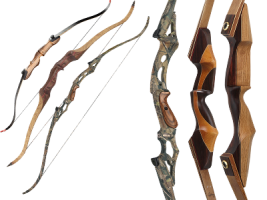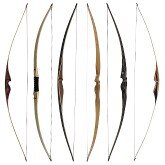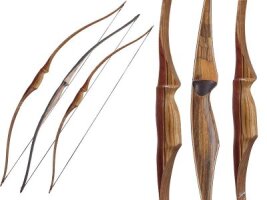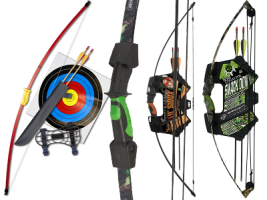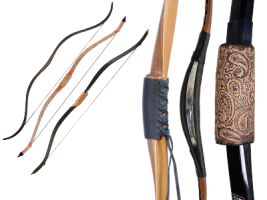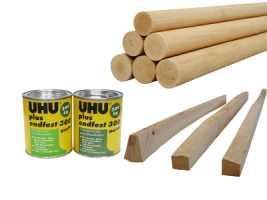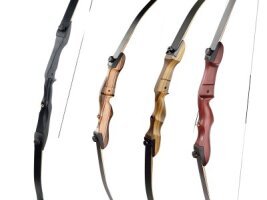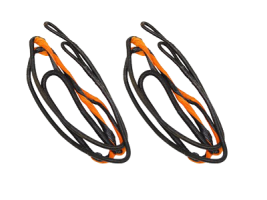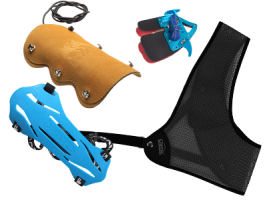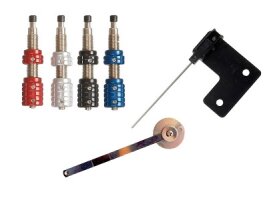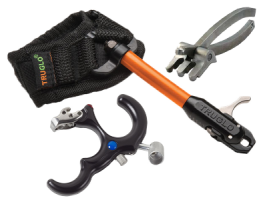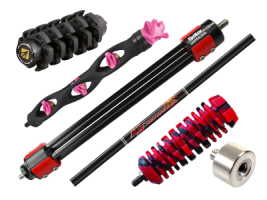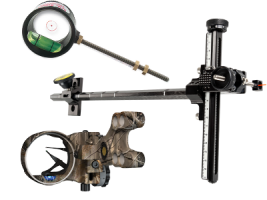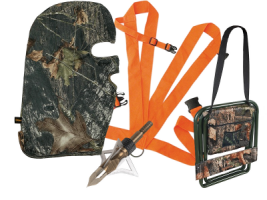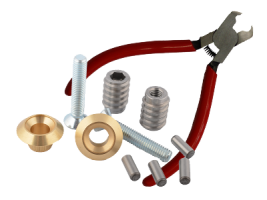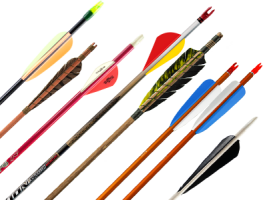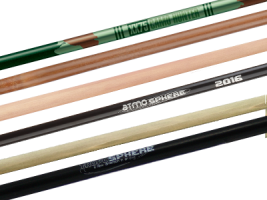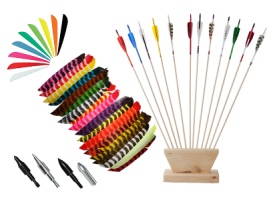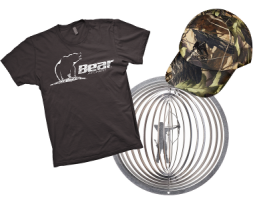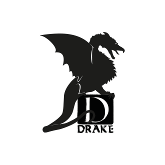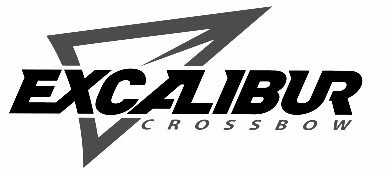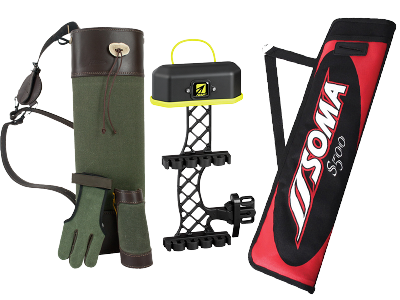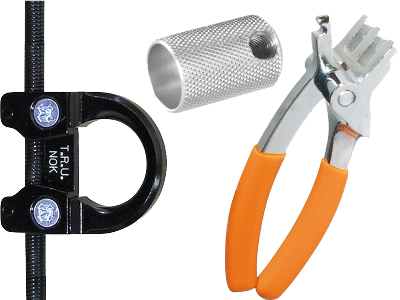What archery accessories are available?
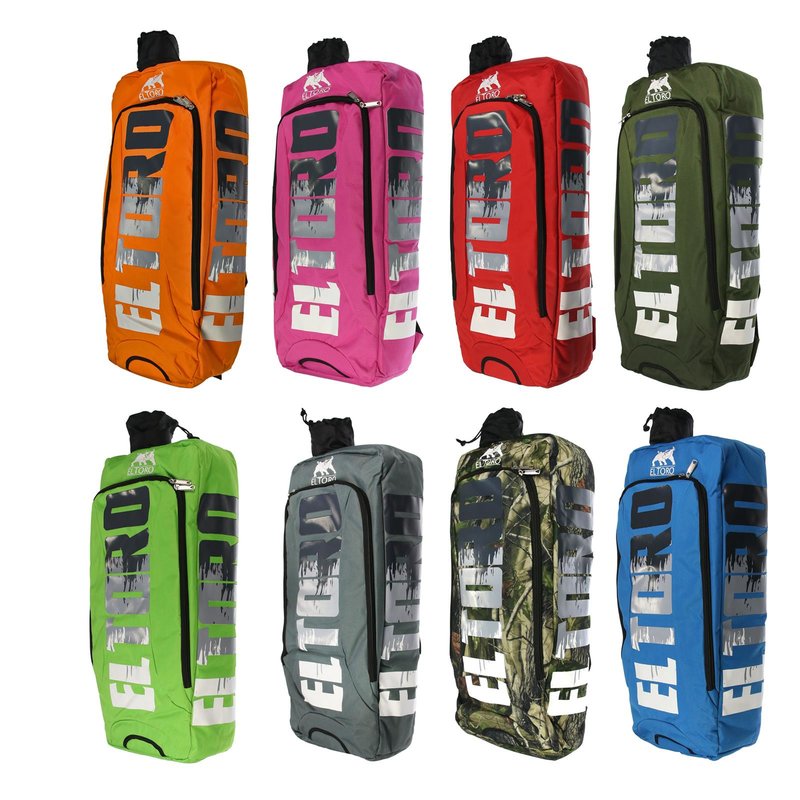
In addition to the actual bow, you will also find a large selection of various archery accessories. So that you don't lose track, we would like to shed a little light on the subject below.
- Covers & bags are used to protect and preserve both your bow and your accessories
- Buttons & clickers are important additions that support advanced sporting archers when shooting
- Stabilisers give your bow maximum shooting stability
- Bow sights are helpful equipment for sporting archers to achieve the best possible shot pattern
- Accessories for bowhunting include, for example, hunting tips, storage boxes and rangefinders
- Bow presses, bow slings and bow stands are other useful accessories that support you in the use and maintenance of your bow
Protective clothing for real archers
Protective clothing is just as essential in archery as careful handling of the bow and arrow. Without protective clothing, the slightest deviation from the optimum shooting sequence can lead to painful injuries.
Arm guard - important archery accessories to prevent injuries
There is a constant risk of the string hitting the forearm when shooting. This can lead to extremely painful abrasions and bruises on the forearm. An arm guard prevents this and should always be worn.
Arm guards are available in numerous variations. They come in different lengths. A short arm guard protects the forearm. This is usually sufficient for experienced shooters. Beginners in particular do not initially have sufficient control over turning the bow arm out of the string's field of movement. A long armguard that also protects the elbow area and upper arm is therefore recommended for them. Depending on the area of use and personal taste, the archer can choose between plastic, nylon, suede, smooth leather or imitation leather.
Protection for hands: fingertab, glove, or release

A fingertab, glove, and release, despite their many differences, share one thing in common: they are used for the secure holding of the bowstring.
The fingertab is placed on the inside of the drawing hand. The middle finger is passed through the hole. The index finger is held behind the smaller flap and the middle and ring fingers behind the larger one.
The finger glove is worn on the drawing hand. The index, middle, and ring fingers are inserted into the finger stalls. The glove is additionally secured at the wrist.
There are also gloves worn on the bow hand. These replace the arrow rest for traditional archers. Compound archers, instead of a tab or glove, use a release. For recurve archers, this accessory has been banned by all associations. There are many different designs. However, the basic principle remains the same: the string is no longer drawn with the hand. Instead, a small clamp replaces the fingers.
Often, however, the string is not taken directly but via a loop. This is a small loop that is attached above and below the nock on the string. To release, a small button or lever is simply operated, which releases the string. This is the crucial advantage: the string is released much faster and more precisely than would be possible by a hand shooter. As a result, fewer vibrations are transferred to the arrow.
Compound archers must handle a release with utmost care. If the release lever is operated during the draw, not only is the arrow prematurely and uncontrollably released. But the release could also hit the shooter themselves in the face, causing painful injuries.
When it comes to archery accessories, the chest guard is also important
Contrary to what the name suggests, the chest protector primarily aims not to protect the chest from injuries. It is also referred to as a plastron and mainly serves to keep clothing away from the string. Loose or thicker clothing is held back. The string bounces off the protector, preventing the string from getting tangled in the clothing during release.
The flight behavior of the arrow is not affected. The chest guard is worn on the bow hand side. It is simply pulled over the clothing. Even though the chest guard primarily aims to improve shooting results, its protective function should not be underestimated. Especially for female shooters, there is a significant risk that the string may graze the chest.
Nocking point for the perfect arrow angle
The nocking point helps the archer to always nock the arrow at the correct angle. The most common are special nocking points made of brass. However, a small winding with bowstring yarn serves the same purpose. The nocking point is positioned on the string so that, when the arrow is nocked directly below the nocking point, it forms an angle of just over 90° with the string. The underside of the arrow lies about 3mm above the right angle.
The easiest and most accurate way to attach a nocking point is with the help of a bow square. If desired, the nocking point can also be installed by our service team. This service can be selected for any bow.
Archery accessories for guiding the arrow - The arrow rest
With the exception of the longbow, all styles of bows require an arrow rest. There are different types of arrow rests: stick-on rests and screw-in rests. Both kinds can be used with or without a plunger. The prices for entry-level arrow rests range from 1.50 euros to 5 euros.
The main function of the arrow rest is to guide the arrow upon release. Longbow archers do not need an arrow rest. They traditionally shoot over the back of the hand, for which a special bow glove is needed, or over a notch in the handle that is usually equipped with a leather rest.


